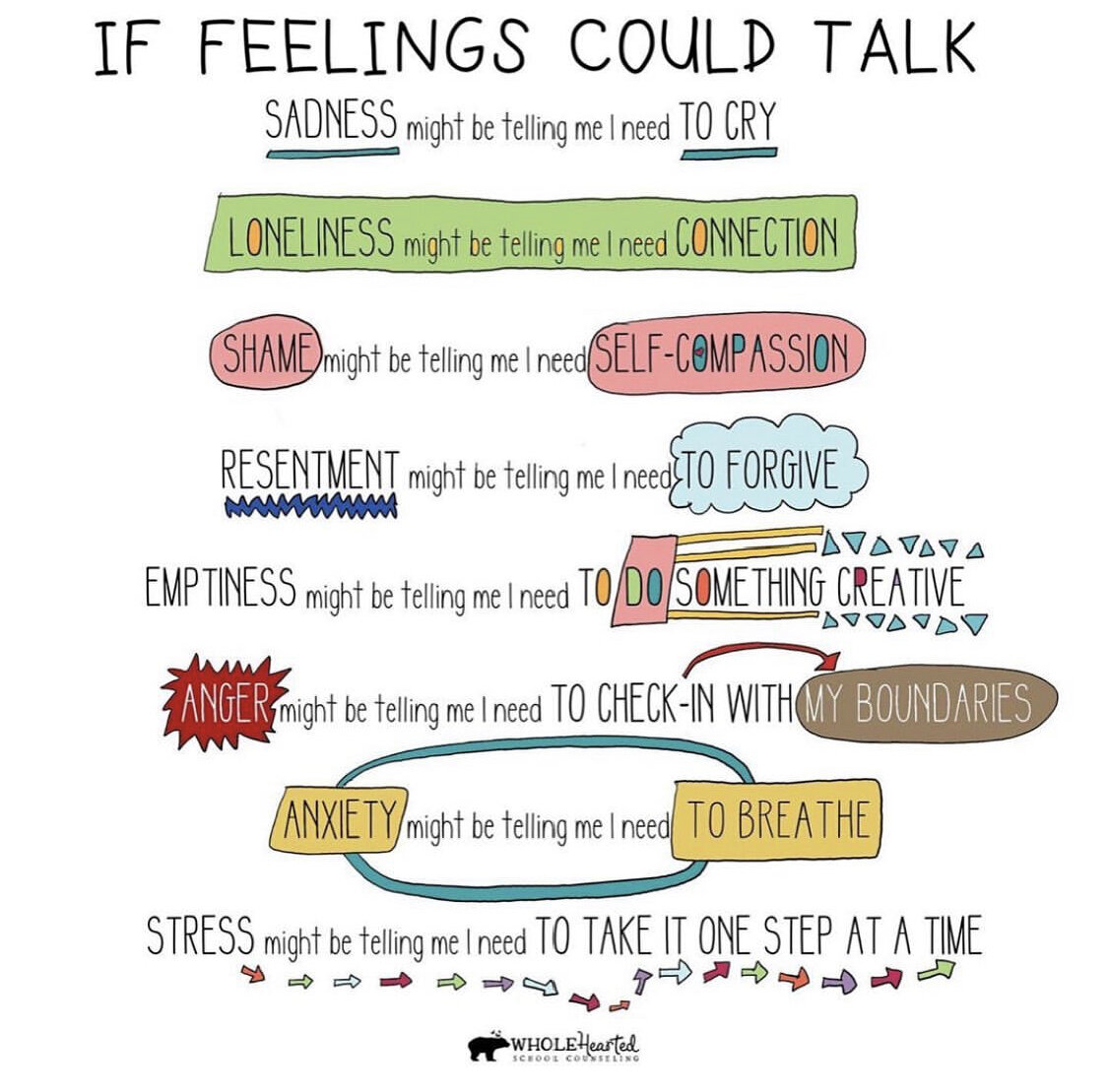Why Naming Your Feelings Matters
And what to do with those feelings
Wouldn’t it be so nice if we could hit the pause button on our emotions?
Like, “Hello brain, can you tell me where the eject button is on this thing?"
Emotions can be uncomfortable, so there’s no denying how nice it would be to bypass them from time to time. It is understandable that we try avoiding our feelings and pushing them away. But you’ve probably noticed that avoiding or denying your feelings does not minimize their impact, or make them go away. Usually, suppression only makes things worse.
So, how do we handle this better instead? It all starts with naming your feelings. Naming your feelings enables you to notice them, and you can’t cope with what you don’t notice.
When you go through the process of naming your emotions, it brings you to the realization that you are not powerless. Awareness of your feelings yields awareness that you have a choice about what to do with them.
The following steps for naming your feelings (which you can use later) help explain why the naming process is essential:
Be specific
When people ask you how you are feeling, do you tend to respond with words like “good,” “okay,” or “fine”? Do you use the word “stress” so often that you aren’t even sure which specific or underlying emotions you feel when you are stressed?
When we are unclear about our feelings, either by mislabeling them or thinking about them too broadly, it helps us avoid understanding what they really mean. On the other hand, if we label our feelings more clearly, we find more clarity about how to handle them.
If you are having trouble getting specific, it can help to identify another feeling that describes how you feel, and that gets to the root of that more generalized feeling. So, for instance, are you stressed and anxious? Are you stressed and drained? Are you stressed and worried?
If you need some examples of specific feelings, check out my Feelings Wheel post from Instagram below.
Understand their purpose
Not all feelings may be desirable, but they each have a purpose. The other part of naming your feelings involves trying to pinpoint their cause.
If you are experiencing an intense feeling about something or someone, it means that you care. Instead of getting further frustrated about having feelings, try adjusting your perspective. Think of your feelings as a guide toward discovering what matters to you. For instance, if you are feeling withdrawn, it is helpful to know if you are sad or depressed about something, or exhausted because you have been working too much. Try writing your feeling down and then associating it with a few things you think that feeling is connected to – write those down next to it.
Getting honest with yourself and navigating your emotions can lead you to more solutions, contentment, and happiness, even if it doesn’t feel that way now.
What to do with your feelings
Emotions are complex and can be difficult to understand —, so first and foremost, be patient with yourself. Here’s a great cheat sheet from Whole Hearted School Counseling about what your feelings may be signaling to you.
Once you understand a certain emotion better, it can help you address it from a nonjudgmental and self-compassionate place. It will also help open a clearer path as to how to move forward and cope. Therapy is an invaluable tool that can help you understand, navigate, and manage complex feelings. At other times, you might just need to find some emotional release through self-help techniques.
Once you identify your feelings, you will no longer feel stuck or burdened by their label, because naming your feelings is about much more than giving them a name. This is an opportunity to go from saying, “I feel withdrawn” to “I feel withdrawn because I’ve been working too much, so I need more rest and self-care.” Feelings lead us to solutions and greater resiliency, if we allow them to — and showing up to what you feel is half the battle.
Remember: this post is for informational purposes only and may not be the best fit for you and your personal situation. It shall not be construed as legal, financial, or medical advice. The information and education provided here is not intended or implied to supplement or replace professional advice of your own attorney, accountant, physician, or financial advisor. Always check with your own physician, attorney, financial advisor, accountant, or other business or medical professional before trying or implementing any information read here.


